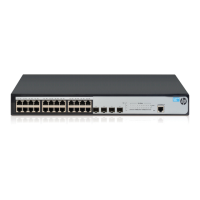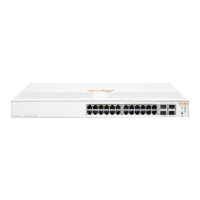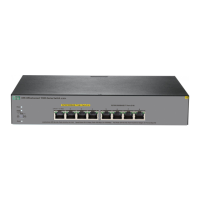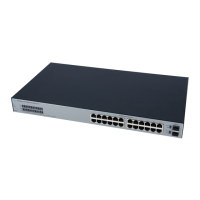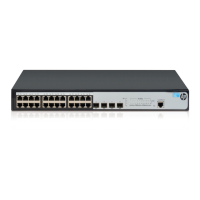3
Security
•
Advanced access control lists (ACLs)
enables network traffic filtering and enhances network control
using MAC- and IP-based ACLs; time-based ACLs allow for greater
flexibility with managing network access
•
Secure Sockets Layer (SSL)
encrypts all HTTP traffic, allowing secure access to the
browser-based management GUI in the switch
•
IEEE 802.1X and RADIUS network logins
controls port-based access for authentication and accountability
•
Automatic VLAN assignment
assigns users automatically to the appropriate VLAN based on their
identity, location and time of day
•
STP BPDU port protection
blocks Bridge Protocol Data Units (BPDUs) on ports that do not
require BPDUs, preventing forged BPDU attacks
•
STP root guard
protects the root bridge from malicious attacks or configuration
mistakes
•
Automatic denial-of-service protection
monitors for malicious attacks and protects the network by blocking
the attacks
•
Management password
provides security so that only authorized access to the Web browser
interface is allowed
Performance
•
Half-/full-duplex auto-negotiating capability on every port
doubles the throughput of every port
•
Selectable queue configurations
allows for increased performance by selecting the number of
queues and associated memory buffering that best meet the
requirements of the network applications
•
IGMP snooping
improves network performance through multicast filtering, instead
of flooding traffic to all ports
•
Fiber uplink
provides greater distance connectivity using Gigabit Ethernet fiber
uplinks
Layer 2 switching
•
VLAN support and tagging
supports IEEE 802.1Q (4,094 VLAN IDs) and 256 VLANs
simultaneously
•
Spanning Tree Protocol (STP)
supports standard IEEE 802.1D STP, IEEE 802.1w Rapid Spanning
Tree Protocol (RSTP) for faster convergence, and IEEE 802.1s
Multiple Spanning Tree Protocol (MSTP)
•
BPDU filtering
drops BPDU packets when STP is enabled globally but disabled on a
specific port
•
Jumbo frame support
supports up to 10 kilobyte frame size to improve the performance
of large data transfers
Layer 3 services
•
Address Resolution Protocol (ARP)
determines the MAC address of another IP host in the same subnet;
supports static ARPs; gratuitous ARP allows detection of duplicate
IP addresses; proxy ARP allows normal ARP operation between
subnets or when subnets are separated by a Layer 2 network
•
DHCP relay
simplifies management of DHCP addresses in networks with
multiple subnets
Layer 3 routing
•
NEW Static IPv4/IPv6 routing
provides basic routing (supporting up to 32 static routes and 8
virtual VLAN interfaces); allows manual routing configuration
Resiliency and high availability
•
Available redundant power supply
provides additional PoE of up to 740 W for high-power applications
like HP Gigabit Ethernet IntelliJack switches; the HP RPS1600
Redundant Power System (JG136A), which is sold separately, is for
use with the 1910-24G-PoE (365W) switch model only
•
Link aggregation
groups together multiple ports (up to a maximum of two ports)
automatically using Link Aggregation Control Protocol (LACP), or
manually, to form an ultra-high-bandwidth connection to the
network backbone; helps prevent traffic bottlenecks
Convergence
•
LLDP-MED (Media Endpoint Discovery)
defines a standard extension of LLDP that stores values for
parameters such as QoS and VLAN to automatically configure
network devices such as IP phones
•
PoE allocations
supports multiple methods (automatic, IEEE 802.3af class,
LLDP-MED, or user-specified) to allocate PoE power for more
efficient energy savings
•
Auto voice VLAN
recognizes IP phones and automatically assigns voice traffic to
dedicated VLAN for IP phones
Additional information
•
Green initiative support
provides support for RoHS and WEEE regulations

